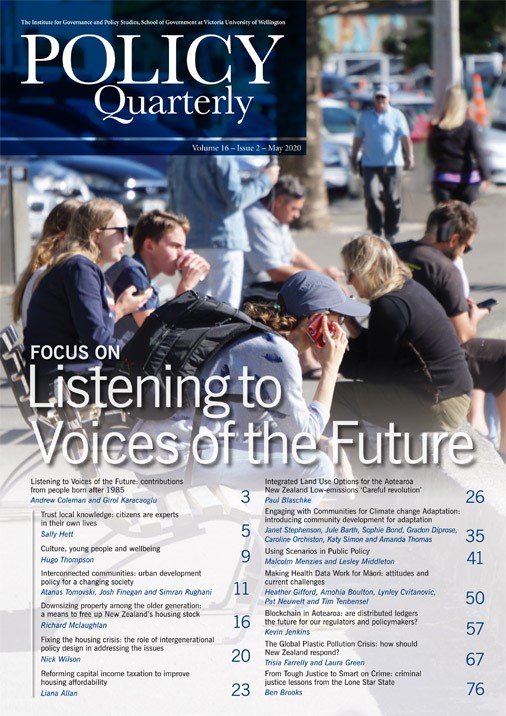Interconnected communities
urban development policy for a changing society
DOI:
https://doi.org/10.26686/pq.v16i2.6475Abstract
Younger cohorts want changes in the environments they live in. They want to live in interconnected environments that provide fluidity between work, home and recreational spaces. Interconnected environments are conducive to young people building connections and social networks, creating interconnected communities. These interconnected communities provide flexibility in work–life balance, improve accessibility to amenities, build latent support networks and social capital, and provide environmental benefits that are congruent with compact living.
Downloads
Downloads
Published
Issue
Section
License
Permission: In the interest of promoting debate and wider dissemination, the IGPS encourages use of all or part of the articles appearing in PQ, where there is no element of commercial gain. Appropriate acknowledgement of both author and source should be made in all cases. Please direct requests for permission to reprint articles from this publication to Policy-Quarterly@vuw.ac.nz.



